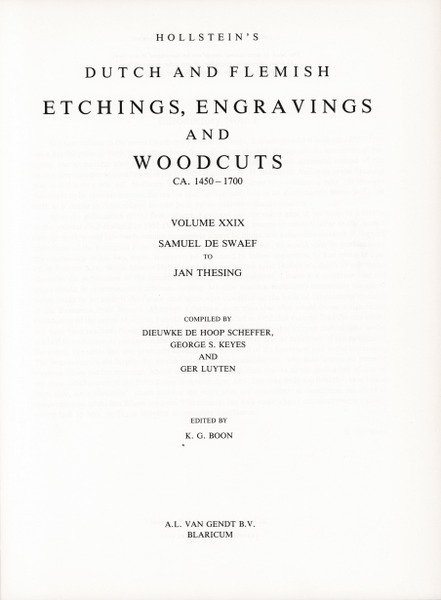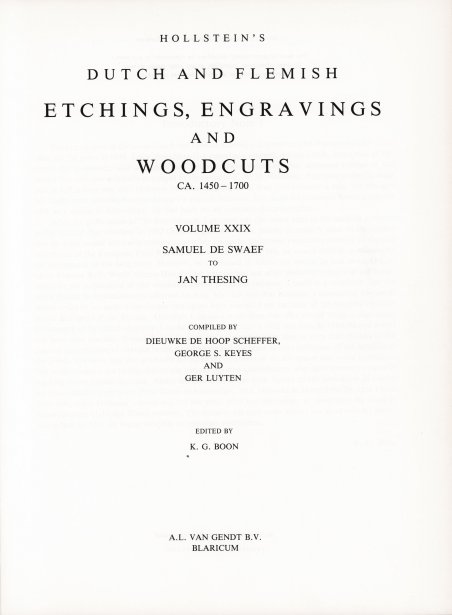Détails
Description
Compilato da Dieuwke De Hoop Scheffer, George S. Keyes e Ger Luyten; edito da K. G. Boon. Pubblicazione: Blaricum, van Gedt, c1984. Descrizione fisica: 214 p.: ill.; 27 cm. Fa parte di: Hollstein?s Dutch & Flemish etchings, engravings and woodcuts, ca. 1450-1700. ' Quando il primo volume dell'opera di riferimento sulla stampa olandese e fiamminga, diventata nota come “Hollstein”, fu pubblicato nel 1949, nessuno poteva aspettarsi che ci sarebbero voluti più di 60 anni per arrivare alla fine con la pubblicazione dei volumi di indice. Fu l'iniziativa di Friedrich Wilhelm Hollstein (1888-1957), un commerciante di stampe e banditore berlinese che, costretto dalle circostanze a lasciare la Germania nel 1937, si trasferì ad Amsterdam. Egli calcolò che avrebbe avuto bisogno di 25 volumi per catalogare l'intera produzione di stampe dal 1450 al 1700; quando morì nel 1957, quattordici volumi avevano già visto la luce e, grazie all'intervento del Rijksprentenkabinet, di Karel G. Boon in particolare, degli editori Menno Hertzberger, A.L. van Gendt, Koninklijke Van Poll e Sound & Vision Publishers, che credettero nel progetto e furono pronti a investire in esso, che la serie fu portata avanti fino alla completa realizzazione, avvenuta dopo 53 anni di lavoro e il compimento di 72 volumi (l’ultimo dei quali riporta l’indice dell’opera). Compiled by Dieuwke De Hoop Scheffer, George S. Keyes and Ger Luyten; edited by K. G. Boon. Publishing: Blaricum, van Gendt, c1984. Physical description: 214 p.: ill.; 27 cm. Taken from the series: Hollstein?s Dutch & Flemish etchings, engravings and woodcuts, ca. 1450-1700. ' When the first volume of the reference work on Dutch and Flemish printmaking that has become known as “Hollstein” was published in 1949 no one could expect that it should take more than 60 years to reach the end with the publication of index volumes. It was the initiative of Friedrich Wilhelm Hollstein (1888-1957), a Berlin print dealer and auctioneer who was forced by circumstances to leave Germany in 1937 and moved to Amsterdam. He must have been an optimistic man: he calculated that he would need 25 volumes to catalogue the entire production of prints from 1450 to 1700. Fourteen volumes had seen the light of day by the time he died in 1957, and it was due to the intervention of the Rijksprentenkabinet, and of Karel G. Boon in particular, and the book publishers Menno Hertzberger, A.L. van Gendt, Koninklijke Van Poll, and Sound & Vision Publishers, who believed in the project and were prepared to invest in it, that the series was continued. Slowly the standard of the print descriptions improved, and the series was completed thanks to the dedication and involvement of the late Mrs Dieuwke de Hoop Scheffer and her successors. It took another 53 years to finish the series, which now has reached the end in 72 volumes. Cfr.


Découvrez comment utiliser
Découvrez comment utiliser

